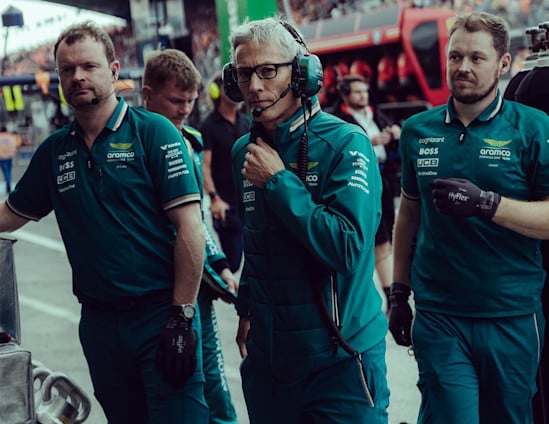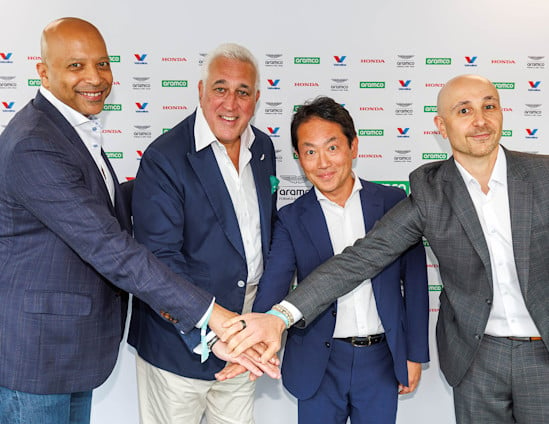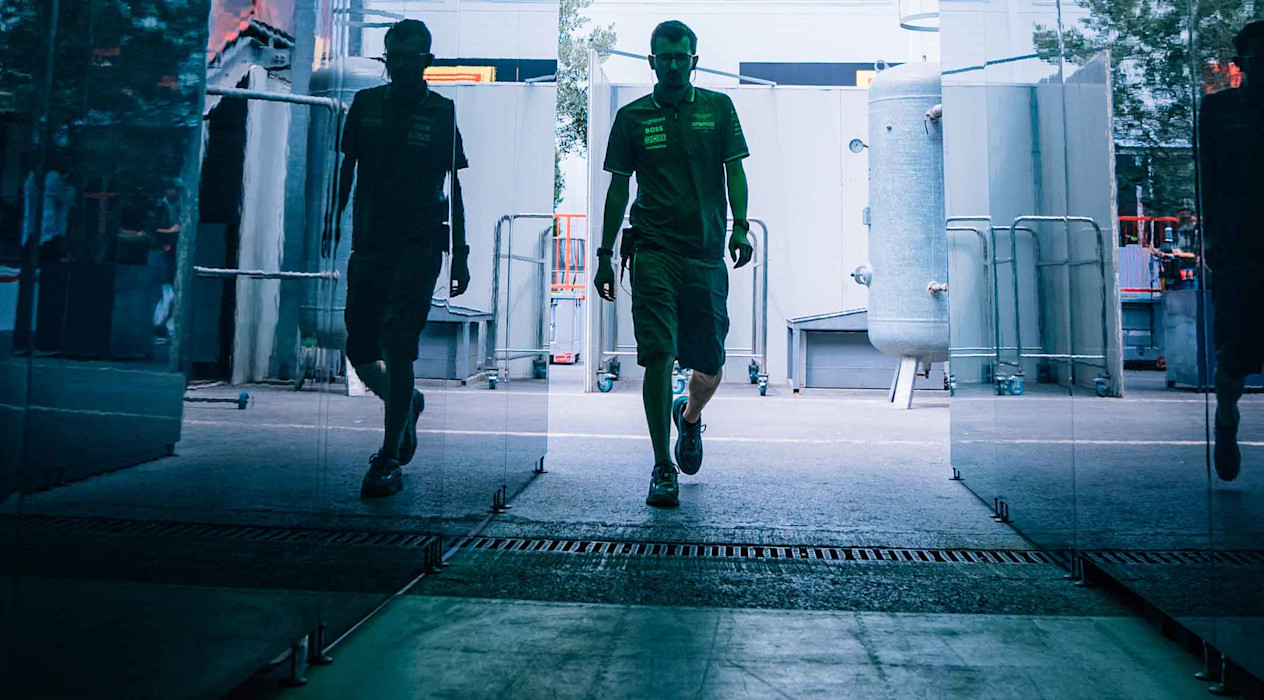
Race Team Parts and Lifing Co-ordinator Jack Smith reveals the impressive and intricate spares and parts operation the team has in place to keep our cars on track throughout a Formula One season.
A Formula One car is a high-tech jigsaw made up of more than 20,000 pieces yet a far higher number is required over the course of a year to keep the car on the track.
A continual stream of upgrades, natural wear and tear, and the combative, high-stakes nature of F1, mean that many of the parts of the AMR24 at the season-opening Bahrain Grand Prix have long-since been replaced, highlighting the need for a constant resupply of parts both before and during a race weekend.
Tasked with managing this operation trackside is Race Team Parts and Lifing Co-ordinator Jack Smith. Here, he lifts the lid on the process that keeps our cars on track.
In the garage
"You've got two crews of mechanics – one looking after Lance's car and one looking after Fernando's. Then 'back of house' in the garage we have several departments: Engine Kitting, Sub-assembly, Composites, Electronics, Tyres and, my department, Spares.
"We build the AMR24 to certain build specifications and each department has spare parts for any repairs or changes. Being the Race Team Spares Co-ordinator, it's my job to make sure that I've got what I need for the areas of the car that I look after. Then, I ensure the other departments have what they need and, if they have shortages or need things chasing, I can find out if the parts are on the way to the track.
"On a built car we have around 1,000 parts but that's in terms of fully assembled pieces. For example, a steering rack trackside is considered a single component but inside that, you'll have circa 70 parts, so if you look at every single component on a car, it's 20,000-30,000 parts that we're looking after."

Keeping track
"Everything on the car that is a major assembly is 'lifed', meaning it has a set mileage it can do before you need to remove it for a service or it has no life left and you need to replace it.
"We have a Lifing team at the AMR Technology Campus to track that and my job trackside is to make sure that, if there are any problems or last-minute changes, the Lifing team is aware so we know the correct life of each component."
Working trackside
"I go to the track on Tuesday of race week. I unload all my department's parts and set up my area in the garage. Once that's done, I'll start looking into all the allocations – our Lifing team allocates components to the cars – for the race weekend, and then run through our freight deliveries and lay the allocated parts out so when the mechanics arrive they have everything to start building.
"My job is very busy at the start of race week but once the cars are built it calms down a little. I start race week making sure everyone's got everything but once that's done, my attention turns to all the extra spares, making sure they're well-organised and prepared, so if we have a situation where we need them, they're easy to find and ready to be fitted.
"I also make sure our relevant inventory and lifing systems are accurate to track our shortages. If parts get damaged, I make sure that the system is updated so replacements are ordered and they are with us for the next Grand Prix."

Dealing with incidents
"There are different sizes of incidents. Small incidents are when a component has been hit by a stone or the material has broken, for example, and you replace it at the earliest opportunity.
"With medium incidents, when a driver has brushed against a barrier, for example, you need to go through the process of making sure the car is safe to go back out and change any parts that require changing.
"With large incidents, you’re replacing significant components on the car, for example built-up front spare corners, or potentially changing the engine or gearbox.
"The more items you need to change, the more time it takes and when there's an incident, particularly in the first session of the day with more running to follow, you have to make those calls quickly.
"Based on experience and the size of the incident, you will know some of the components which will need changing as a minimum and I'll start getting those ready for when the car returns to the garage. In that timeframe, the relevant engineers also determine any further changes required to make the car safe to return to track.
"During the process of these parts changes, we need to make sure we record them so our Lifing team can update the relevant systems to ensure we are compliant with all FIA regulations.
"Once the car has been rebuilt and is ready to return to the track, I'll make a note of any damaged components, quarantine them and prepare them to be returned to the AMR Technology Campus where we can potentially repair them."
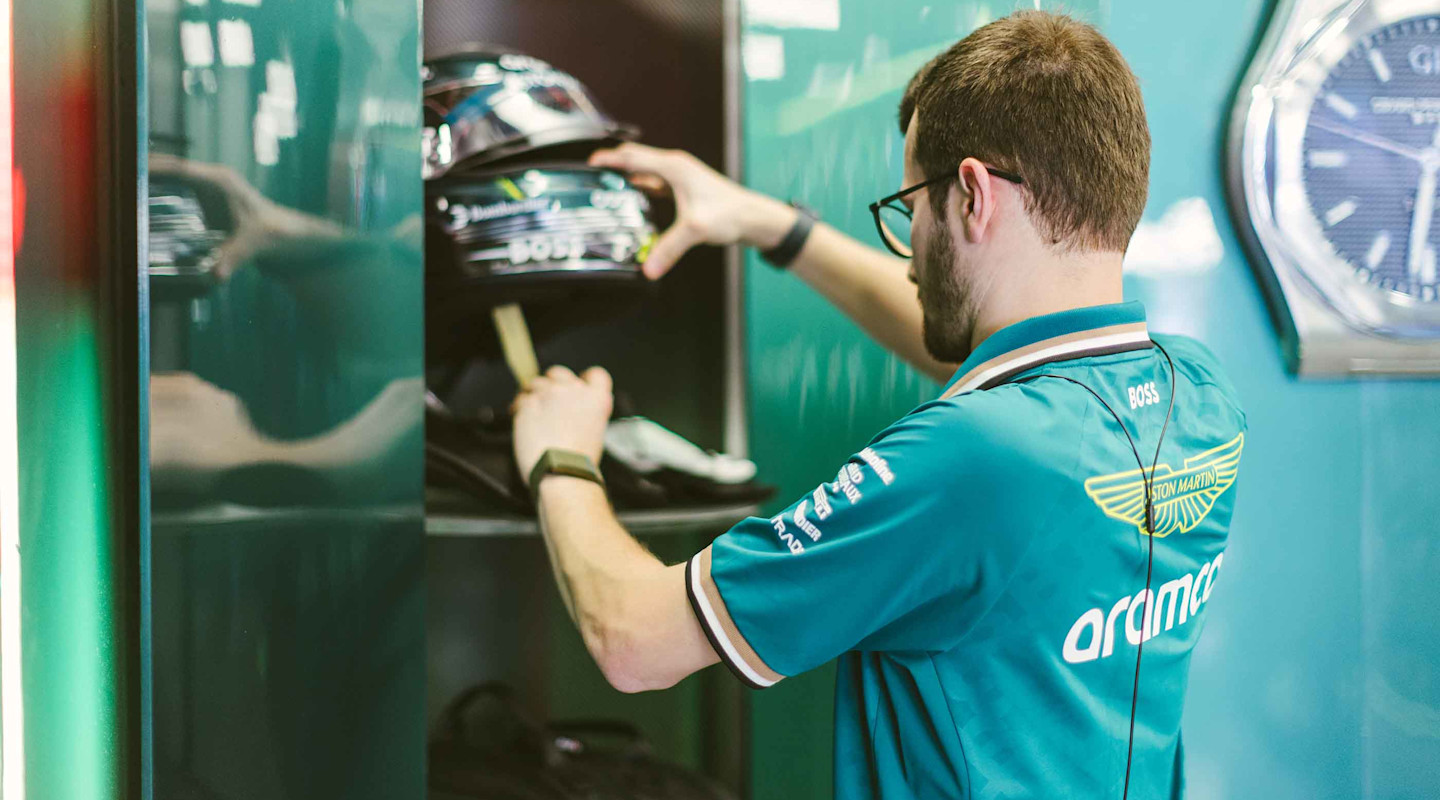
In the drivers' corner
"When trackside, I ensure the drivers have everything they need before a session, such as their helmets, gloves and earpieces. I also check the drivers' personal trainers have all the techwear the drivers need for a session, such as race suits, boots and fireproof underwear.
"In addition, when there are updates to team partners, I work closely with our commercial department to ensure any partner logos changes are reflected on the drivers' race suits and on the car."
Part of a dream
"I've always been a fan of motorsport. My first job was working for someone who set up their own composites company having previously worked with Jordan Grand Prix. I rose through the ranks to ultimately run the composites workshop and, after that, I joined the team as a Production Engineer, when it was previously known as Racing Point.
"With an F1 car being made up of so many parts, I'm often asked how I know what all of them are trackside. That's where my previous experience of managing the parts back at base as a Production Engineer comes in. I was across every stage of the process: from the parts getting released by the Design Office to sending them out to the Race Team. I also worked very closely with the person who was previously the Race Team Parts and Lifing Co-ordinator so when I moved trackside it felt very natural – I had already been dealing with a lot of the parts.
"I always wanted to work in F1 since I was a kid and this is just my way of living that dream."
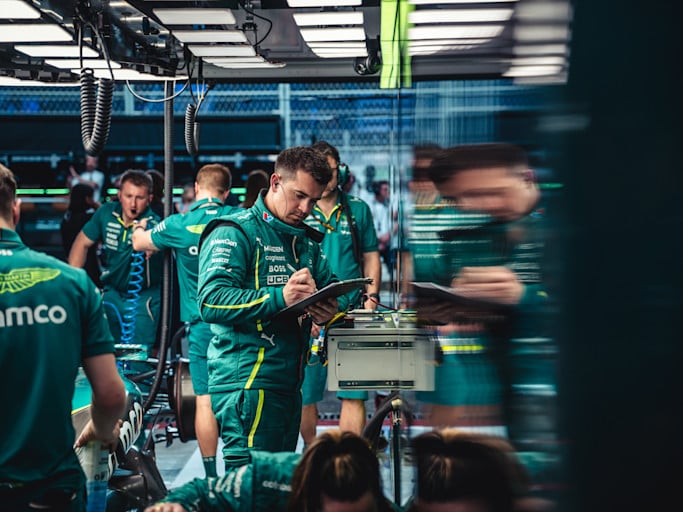
Amplify your fan experience
From exclusive collabs to once-in-a-lifetime prizes, I / AM DROPS is a new series of unique and ultra-limited moments and fan experiences.
Sign up for I / AM or sign in to unlock.



